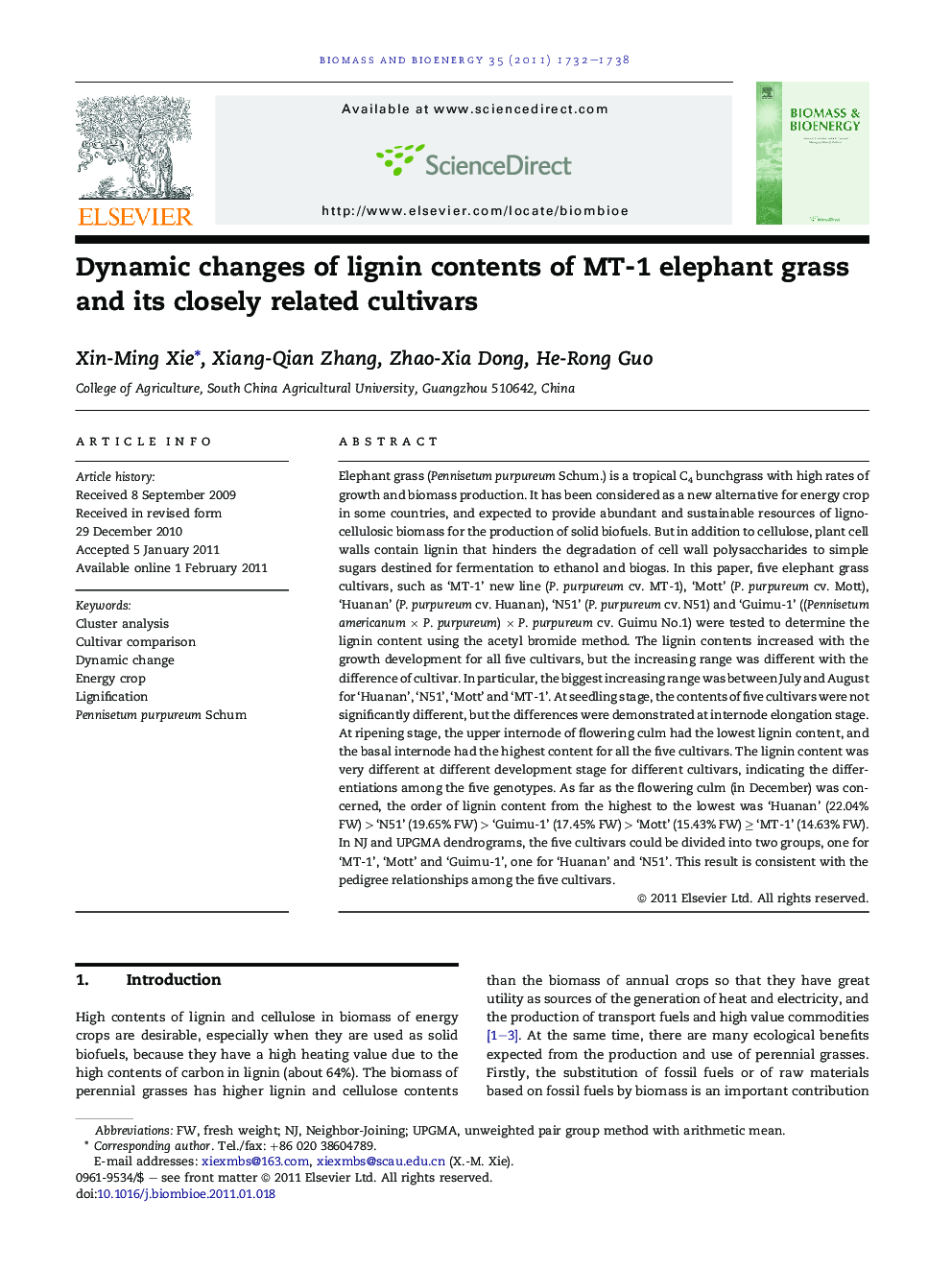| کد مقاله | کد نشریه | سال انتشار | مقاله انگلیسی | نسخه تمام متن |
|---|---|---|---|---|
| 677716 | 888622 | 2011 | 7 صفحه PDF | دانلود رایگان |

Elephant grass (Pennisetum purpureum Schum.) is a tropical C4 bunchgrass with high rates of growth and biomass production. It has been considered as a new alternative for energy crop in some countries, and expected to provide abundant and sustainable resources of lignocellulosic biomass for the production of solid biofuels. But in addition to cellulose, plant cell walls contain lignin that hinders the degradation of cell wall polysaccharides to simple sugars destined for fermentation to ethanol and biogas. In this paper, five elephant grass cultivars, such as ‘MT-1’ new line (P. purpureum cv. MT-1), ‘Mott’ (P. purpureum cv. Mott), ‘Huanan’ (P. purpureum cv. Huanan), ‘N51’ (P. purpureum cv. N51) and ‘Guimu-1’ ((Pennisetum americanum × P. purpureum) × P. purpureum cv. Guimu No.1) were tested to determine the lignin content using the acetyl bromide method. The lignin contents increased with the growth development for all five cultivars, but the increasing range was different with the difference of cultivar. In particular, the biggest increasing range was between July and August for ‘Huanan’, ‘N51’, ‘Mott’ and ‘MT-1’. At seedling stage, the contents of five cultivars were not significantly different, but the differences were demonstrated at internode elongation stage. At ripening stage, the upper internode of flowering culm had the lowest lignin content, and the basal internode had the highest content for all the five cultivars. The lignin content was very different at different development stage for different cultivars, indicating the differentiations among the five genotypes. As far as the flowering culm (in December) was concerned, the order of lignin content from the highest to the lowest was ‘Huanan’ (22.04% FW) > ‘N51’ (19.65% FW) > ‘Guimu-1’ (17.45% FW) > ‘Mott’ (15.43% FW) ≥ ‘MT-1’ (14.63% FW). In NJ and UPGMA dendrograms, the five cultivars could be divided into two groups, one for ‘MT-1’, ‘Mott’ and ‘Guimu-1’, one for ‘Huanan’ and ‘N51’. This result is consistent with the pedigree relationships among the five cultivars.
► Elephant grass has been considered as a new alternative for energy crop.
► Lignin hinders the degradation of polysaccharides to simple sugars for fermentation.
► Lignin content was very different at different development stages for five cultivars.
► Five cultivars were divided into two groups based on lignin contents, conforming to their pedigree relationships.
Journal: Biomass and Bioenergy - Volume 35, Issue 5, May 2011, Pages 1732–1738